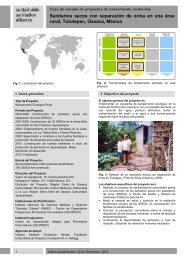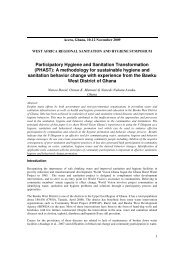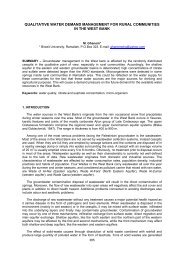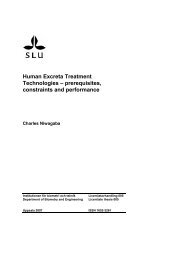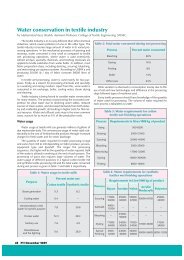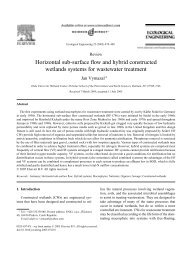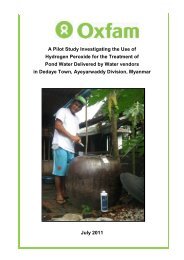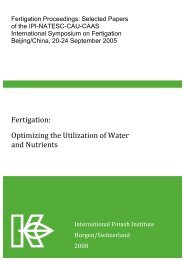The Incinerator Guidebook: A Practical Guide for Selecting ... - SSWM
The Incinerator Guidebook: A Practical Guide for Selecting ... - SSWM
The Incinerator Guidebook: A Practical Guide for Selecting ... - SSWM
You also want an ePaper? Increase the reach of your titles
YUMPU automatically turns print PDFs into web optimized ePapers that Google loves.
I. Introduction<br />
Purpose and approach<br />
This guidebook is intended to be a practical guide <strong>for</strong> selecting, purchasing, installing, operating,<br />
and maintaining small-scale incinerators in low-resource settings. Small-scale refers to incinerators<br />
with a capacity to destroy approximately 12 to 100 kilograms of waste per hour. For the duration of<br />
this document, the term incinerator will refer to small-scale incinerators. This guide was designed to<br />
help program planners address the challenges of safe management of health care waste (HCW).<br />
Every country and health setting faces different challenges to managing HCW safely. <strong>The</strong>re is no<br />
one solution or technology that meets all needs. Programs must spend time to effectively plan and<br />
introduce any treatment solutions. <strong>The</strong> following in<strong>for</strong>mation has been gathered to assist with this<br />
process.<br />
This resource approaches the challenge of final disposal by providing key in<strong>for</strong>mation on the<br />
following areas:<br />
� Understanding incinerator per<strong>for</strong>mance.<br />
� Available technologies.<br />
� <strong>Selecting</strong> an appropriate incinerator.<br />
� Best practices <strong>for</strong> procurement of small-scale incinerators.<br />
� Installation.<br />
� Training and supervision.<br />
� Operation and safety.<br />
� Maintenance and repair.<br />
To date, developing countries have had more experience with brick incinerators and this guide<br />
reflects that experience. As more, lower-cost incinerator technologies become available and are<br />
introduced in low-resource settings, it will be important to publish and share these experiences with<br />
the global community.<br />
Background<br />
Developing countries face an urgent need <strong>for</strong> af<strong>for</strong>dable, safe, and appropriate solutions <strong>for</strong> treating<br />
infectious waste. Without treatment by heat, steam, or chemicals, used needles and syringes (i.e.,<br />
“sharps”) can cause infection and injury. Untreated safety boxes filled with used sharps pile up<br />
outside health facilities, allowing easy access by curious children or animals. Even if immunization<br />
programs specify that safety boxes must be treated according to national policies and standards,<br />
programs in low-resource countries may be <strong>for</strong>ced to resort to whatever means are available to<br />
dispose of infectious waste. One common approach is burning infectious waste in a shallow pit,<br />
which generates toxic emissions and leaves behind melted plastic as well as needles that are often<br />
still sharp and infectious. Additional risks include environmental impacts to air and water quality.<br />
Managing infectious medical waste in developing countries has become an increasingly complex<br />
issue. Global standards <strong>for</strong> acceptable per<strong>for</strong>mance of health care waste management (HCWM) do<br />
not exist. At the national level, policies are often lacking. Technological solutions are limited. In an<br />
attempt to address the dangers, products, needs, and environments are often mismatched.<br />
Appropriate technology combined with support and increased awareness has the immediate<br />
potential to substantially improve waste management practices in many countries.<br />
<strong>The</strong> World Health Organization (WHO) advocates <strong>for</strong> a relative risk approach to waste treatment—<br />
that is, weighing the health risks from environmental exposures against the risks posed by<br />
accidental infection from poorly managed infectious waste (particularly sharps). WHO has<br />
indicated that until the infrastructure and resources are available, there is a need <strong>for</strong> immediate<br />
1



